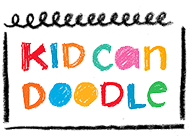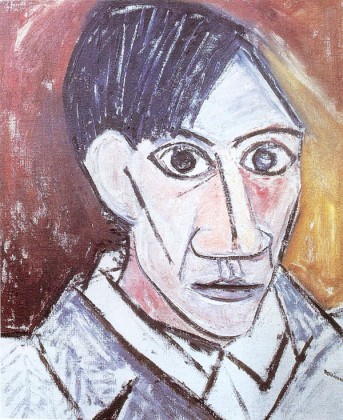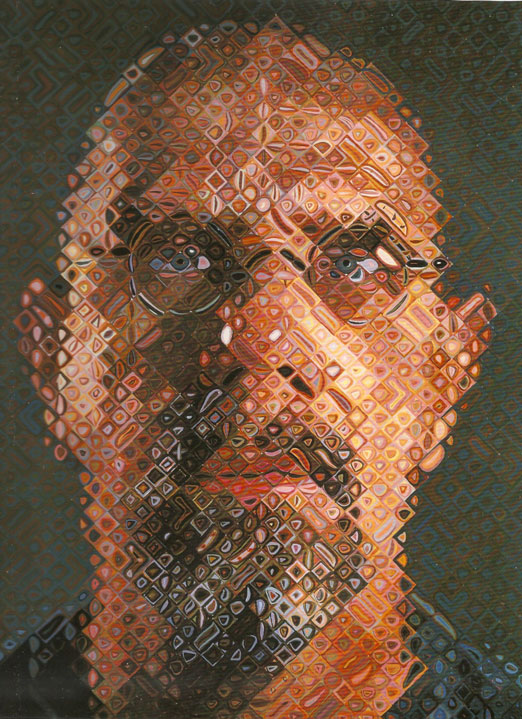While self-portraiture can be traced back to ancient Greeks, Ian Chilvers explains in The Artist Revealed: Artists and Their Self-Portraits that there are 3 main reasons why we don’t see many examples until the Renaissance era (1300-1700) and thereafter:
- There was a move away from religious subject-matter popular during the medieval period (500 AD–1500), as artists began exploring other themes.
- As artists became more successful, it appealed to their vanity to paint themselves and helped to confirm their social status.
- The biggest reason was that mirrors were expensive, luxury items, and not mass-produced until around the 1400s.
To give context to our current KCD Call for Entries, Selfies, here’s 10 of the most famous artists’ self-portraits.
Image Credit: Corbis, Bettman
1. Diego Velázquez (1599-1660), Los Meninas (The Maids of Honor), c. 1656, Prado, Madrid.
One of the most well-known self-portraits in art history shows the artist on the left, holding a brush in his right hand. What’s interesting to note is that while the mirror reflects the opposite of what is true, many artists will correct the reversal, so that Veláquez is most likely right-handed as depicted. What’s not clear is what he’s painting on the large canvas in front of him: Do you think it’s the blonde princess Margarita and her attendants (hence the title), or her parents, whose faces are reflected in the mirror near the background of the painting?
Image Credit: Bridgeman Art Library, Kenwood House, London, UK
2. Rembrandt Van Rijn (1606-69), Self-Portrait, c. 1965, Kenwood House, London.
Regarded as one of the greatest artists of all time, Rembrandt, like Beyoncé, is known by his first name. I’ve always thought his paintings to be dark in palette, but he is actually a master of lighting. This painting is a perfect example: his command of the medium matches his assured gaze.
Image Credit: AKG London
3. Jan (Johannes) Vermeer (1632-75), The Art of Painting, c. 1665-70, Kunsthistorisches Museum, Vienna.
It’s so surprising to see the artist turning his back to the viewer—so defiant—I love it; I wanted to show that self-portraits don’t always depict an author’s face. Vermeer’s attention to details, seen in the map, or the chandelier, makes the painting look realistic, but his model resembling Clio (the muse of history), and his fanciful costume suggest that what we see is staged rather than a true snapshot of his life.
Image Credit: Bridgeman Art Library,
Courtauld Institute Gallery, Somerset House, London, UK
4. Vincent Van Gogh (1853-90), Self-Portrait with Bandaged Ear, 1889, Courtauld Gallery, London.
Evidence of a famous story in which the artist cut his ear after a dispute with his friend, artist Paul Gaugin. It also reveals that Van Gogh didn’t correct the mirror-image he was copying, because he had nipped his LEFT ear—not his right, as seen here. (Side note: Van Gogh has always been a personal favorite of mine; maybe the tortured artist appeals?)
Image Credit: AKG London, © Sucession Picasso DACS 2003
5. Pablo Picasso (1881-1973), Self-Portrait, 1907, Narodni Gallery, Prague.
While this portrait isn’t as abstract as Picasso’s later Cubist works, it does hint at his progression in that direction. It also illustrates my suggestion to emphasize one’s own distinctive characteristics when creating your own portrait for Selfies.
Image Credit: ADAGP Paris & DACS London
6. Marc Chagall (1887-1985), Self-Portrait: In the Twilight, 1938-43, Private Collection.
Chagall’s work is a example of how the inclusion of highly personal details can be more telling than a life-like rendered visage. For instance, we can conclude that his wife is important to him by the way he joins her face with his, combining their features into one.
Image Credit: AKG London
7. Frida Kahlo (1907-54), Self-Portrait with Monkey, 1943, Private Collection.
Kahlo’s love of animals is evident in her painting. She had many furry/feathered friends, including dogs, parrots, deer and monkeys. (Frida Kahlo is coming to The New York Botanical Gardens in Queens this year, May 16 – Nov 1, 2015. NOTE: I wanted to represent more female artists on this list, but in my research, there weren’t many to choose from, and among those, Frida Kahlo seemed the most familiar.)
Image Credit: Bridgeman Art Library, Private Collection, Lauros/Giraudon
8. René Magritte (1898-1967), The Wizard, 1951, Private Collection.
Magritte, was a surrealist famous for playing with reality and illusion—often with a bit of humor—and this portrait is a perfect example of that. We don’t have to take ourselves too seriously, right?
Image Credit: Norman Rockwell Museum, Stockbridge, Massachusetts
9. Norman Rockwell (1894-1978), Triple Self-Portrait, 1960, Rockwell Family Trust.
I adore the way Rockwell, a well-known American illustrator, pokes fun at the process of creating one’s own portrait. Did you notice that he’s holding a paintbrush, yet his work-in-progress resembles a drawing? Or the references to other famous portraits? Or the beverage precariously-placed on the open book?
Image credit: © Chuck Close, courtesy Pace Wildenstein/Photo y Ellen Page Wilson
10. Chuck Close (b. 1940), Self-Portrait, 2000-01, The Art Supporting Foundation to SFMOMA, San Francisco.
An artist still alive(!) and renowned for his self-portraits is Chuck Close. In an interview by Sandy Nairne for Self Portrait: Renaissance to Contemporary (authored by Anthony Bond and Joanna Woodall), Close admits to using himself as model just because he was available, and that he was inspired by Jonathan Swift’s Gulliver’s Travels to make them extra-large in size. “…the idea of Lilliputians crawling over the head of a giant and not even knowing what they were on, stumbling over a beard here and falling through a nostril.” When you see his work in person, it’s amazing to see their scale, and easier to interact with them, experimenting with the relationship between viewing distance and abstraction. (Currently an exhibition of his work is showing at the Museum of Contemporary Art in Sydney, Australia through March 15, 2015.)
I hope seeing these Famous Faces inspires you to try drawing your own portrait. For more help, also check out How to Draw Your Face and 5 Ways to Draw a Selfie. We’d be so honored if you shared your work with us by submitting to Selfies before March 31, 2015.
Sources:
Chilvers, Ian. The Artist Revealed: Artists and Their Self-Portraits. London, The Brown Reference Group, 2003.
Bond, Anthony and Woodall, Joanna. Self Portrait: Renaissance to Contemporary. Great Britain, National Portrait Gallery Publications, 2003.













